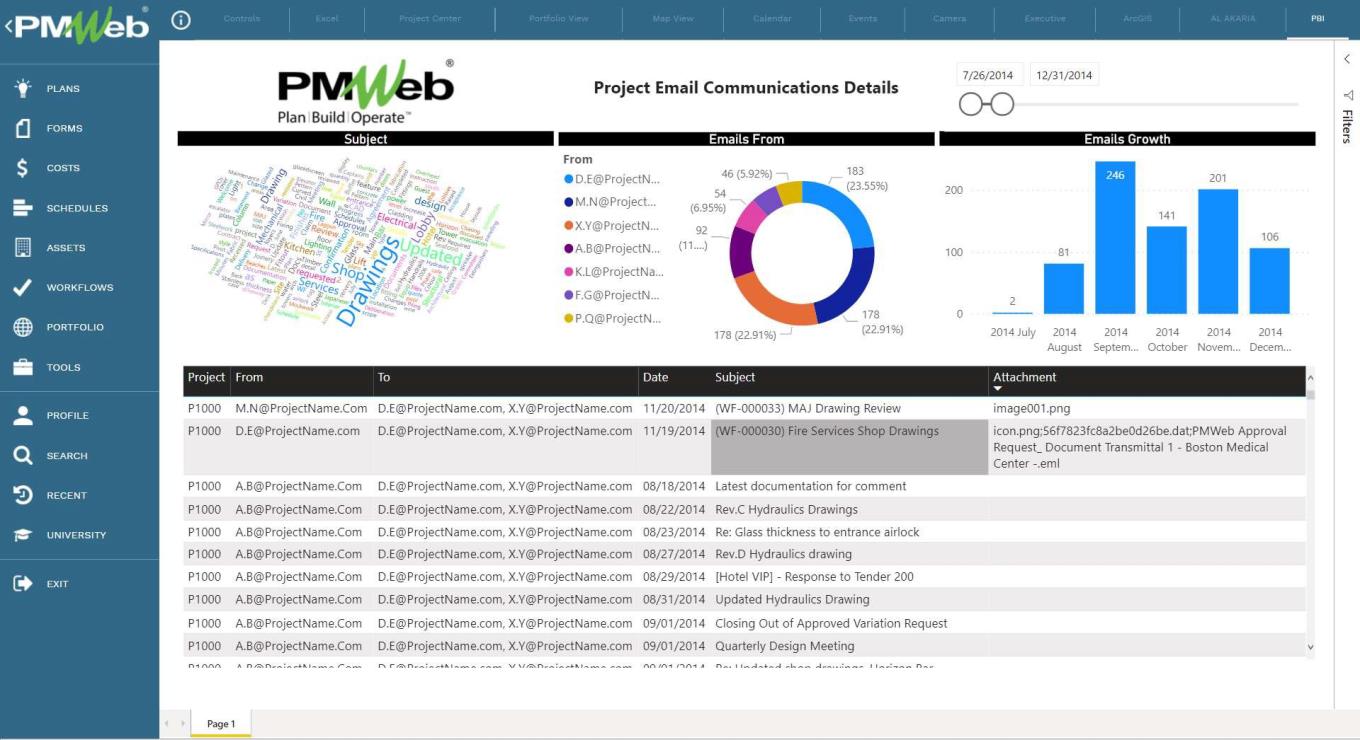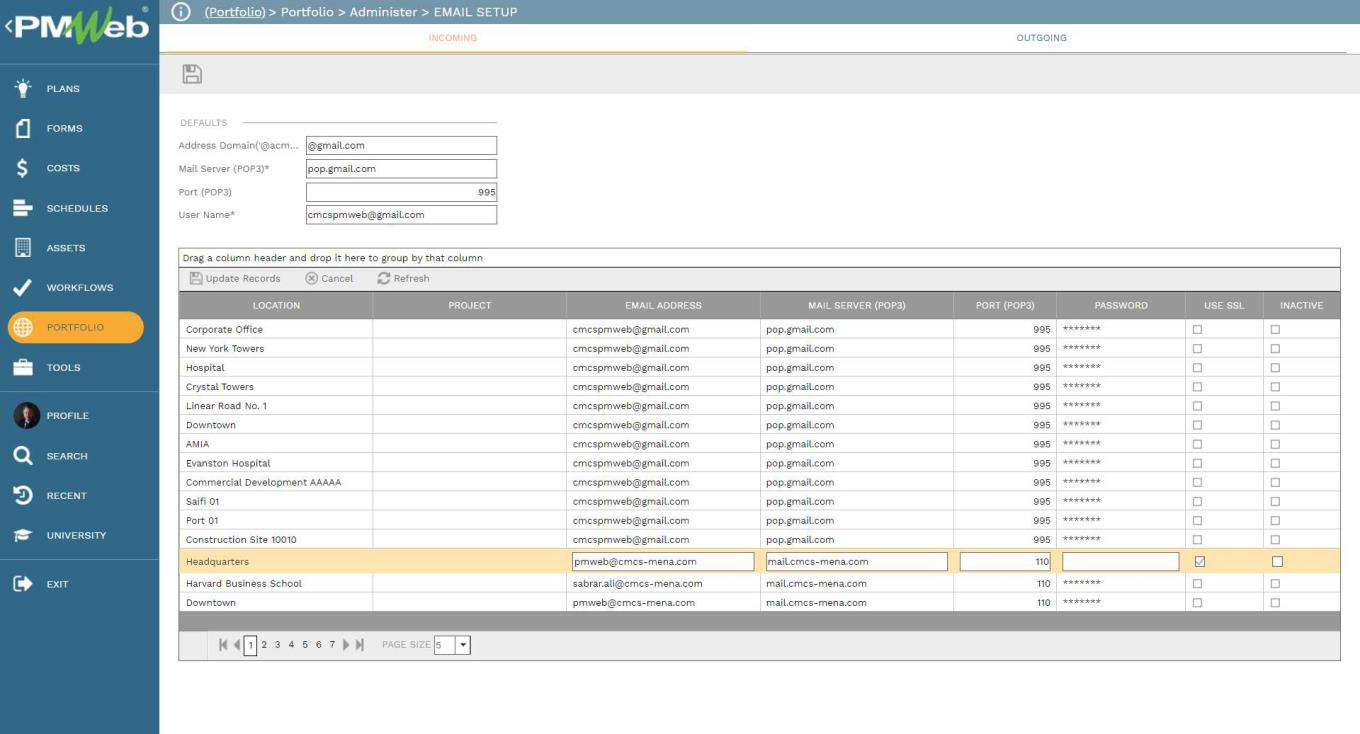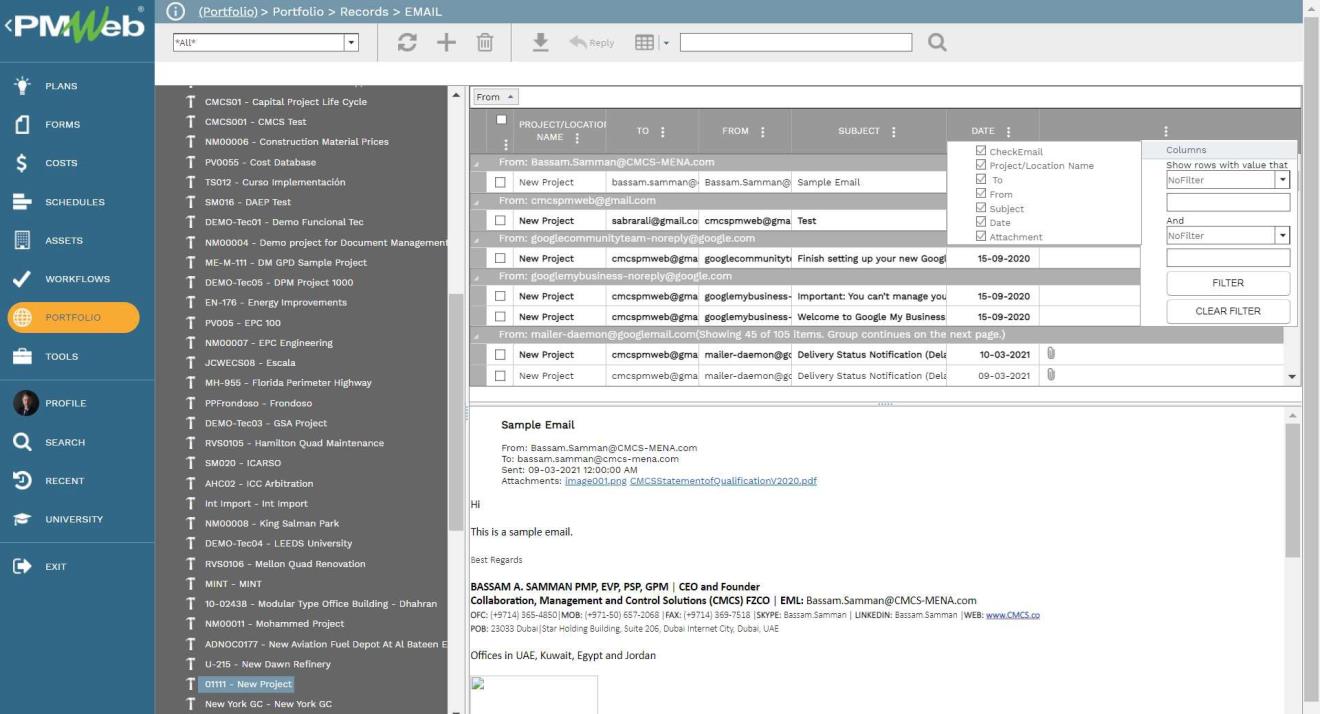The growing use of emails as a means of formal and ad-hoc communications methods on construction projects has many advantages but also carries many risks when it is done without formal management, monitoring, evaluation, and reporting of email communications. The content of these email communications might often have implications for the project’s cost, schedule, quality, and other project objectives.
The issue with email communications is that the content of these communications is usually limited to only those individuals who were part of the communication. In addition, these email communications are often not documented as one of the project communications record types. That is why there is always the risk that email communications are either misplaced or might result in an obligation that an entity will be required to fulfill.
Regardless of if the project control system (PCS) was managed by the project owner or contractor, managing project email communications is no different than managing other projects’ formal communications or project management processes. There should be established guidelines that all individuals representing the various entities involved in delivering the project should abide by. To start with, each project should have its unique email address where all email communications, regardless of how many have been issued, should include the project email address in the ‘To’ list. The email address could be in the format Project1000@MyCompany.com.
The second rule is that email communications can only be sent and received by those individuals who have been authorized by their entities to do so. This authorization is usually communicated in the project management plan (PMP). To address this issue, the project owner needs to create a unique email domain for the project, where only emails from this domain can be considered and approved as project email communications. For example, email addresses should be in the format of Bassam.Samman@Project1000.com for which copies of all emails should also include Register@Project1000.com in their ‘To’ list to fulfill the first requirement stated above.
The third requirement is that each email communication can only be used to address a single ‘Subject.’ Including multiple subjects in the same email is not permitted. This leads to the fourth requirement, where the ‘Subject’ field should always have a meaningful and relevant title. The email subject should include the contract number to which the communication relates, for example, ‘Contract AA23712/2021: Delayed Approval of Permit to Excavate at Entrance Area.’ The last requirement would be that the ‘Reply All’ option should be used when responding to any email communication, and no one can exclude or remove individuals from the email.

Email communications cannot be considered in isolation from the tens of thousands of records and documents exchanged during the project life cycle stages. Therefore, it becomes vital that email communications cannot be stored in a silo that is not part of the overall project’s data and document repository.
Using PMWeb, this issue can be resolved. PMWeb allows importing all project email communications to become part of the overall PMWeb platform. Of course, the original email communications captured on the email data server remain intact. The first step in achieving this starts by establishing the link between the email server used by the organization and PMWeb, using either the email address of Project1000@MyCompany.com or Register@Project1000.com as the interface to ensure that all email communications among all individuals on the project are captured. This requires providing the email address domain, mail server, port, username, and details of the email addresses and their password.

This enables receiving copies of all project email communications in the PMWeb Email Inbox module. Each project has its own inbox folder. For each received email communication, PMWeb captures the project, from, to, subject, and attachment details. In addition, the email itself can be viewed in PMWeb. Further, there is an option to group and select emails by applying filters, searching for emails, and modifying the register layout by hiding or displaying fields.

Reference
The content of this article was extracted from the book titled “Let’s Transform: Enabling Digital Transformation of Capital Construction Projects Using the PMWeb Project Management Information System – 2nd Edition” written by Bassam Samman.
The book provides project owners with oversight on how technology available today can support their efforts to digitally transform the management of their projects’ portfolios. For each capital project life cycle stage, PMWeb is used to detail how the relevant project management business processes can be digitalized to enforce transparency and accountability in delivering projects. In addition, MS Power BI was used to show how the real-time, trustworthy data captured in PMWeb can be aggregated, modeled, monitored, evaluated, analyzed, and reported at any time, anywhere using any device.



